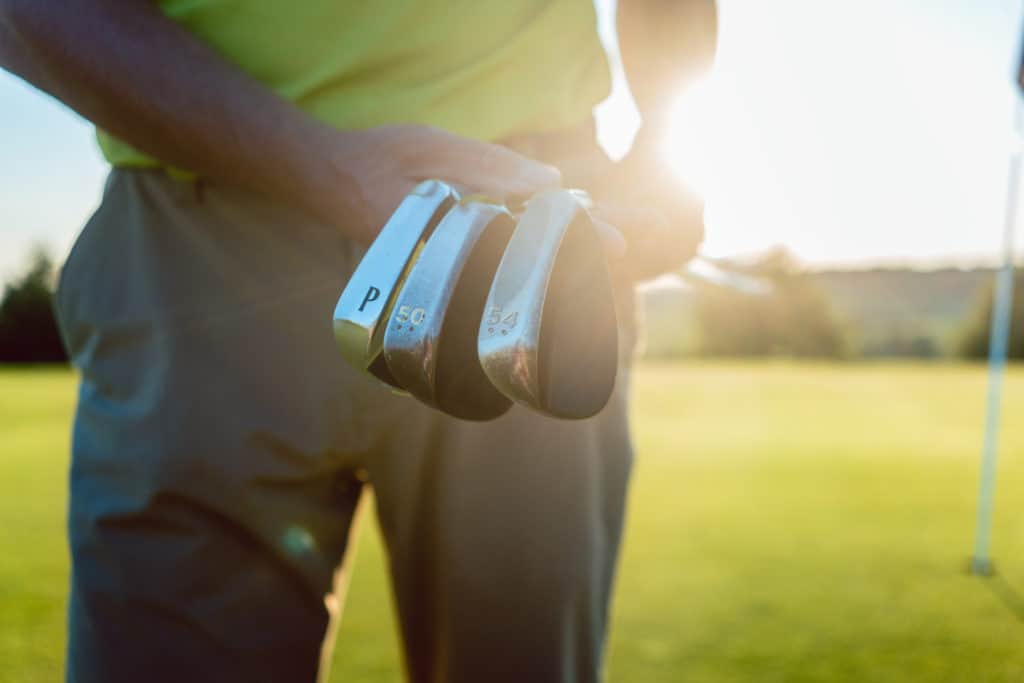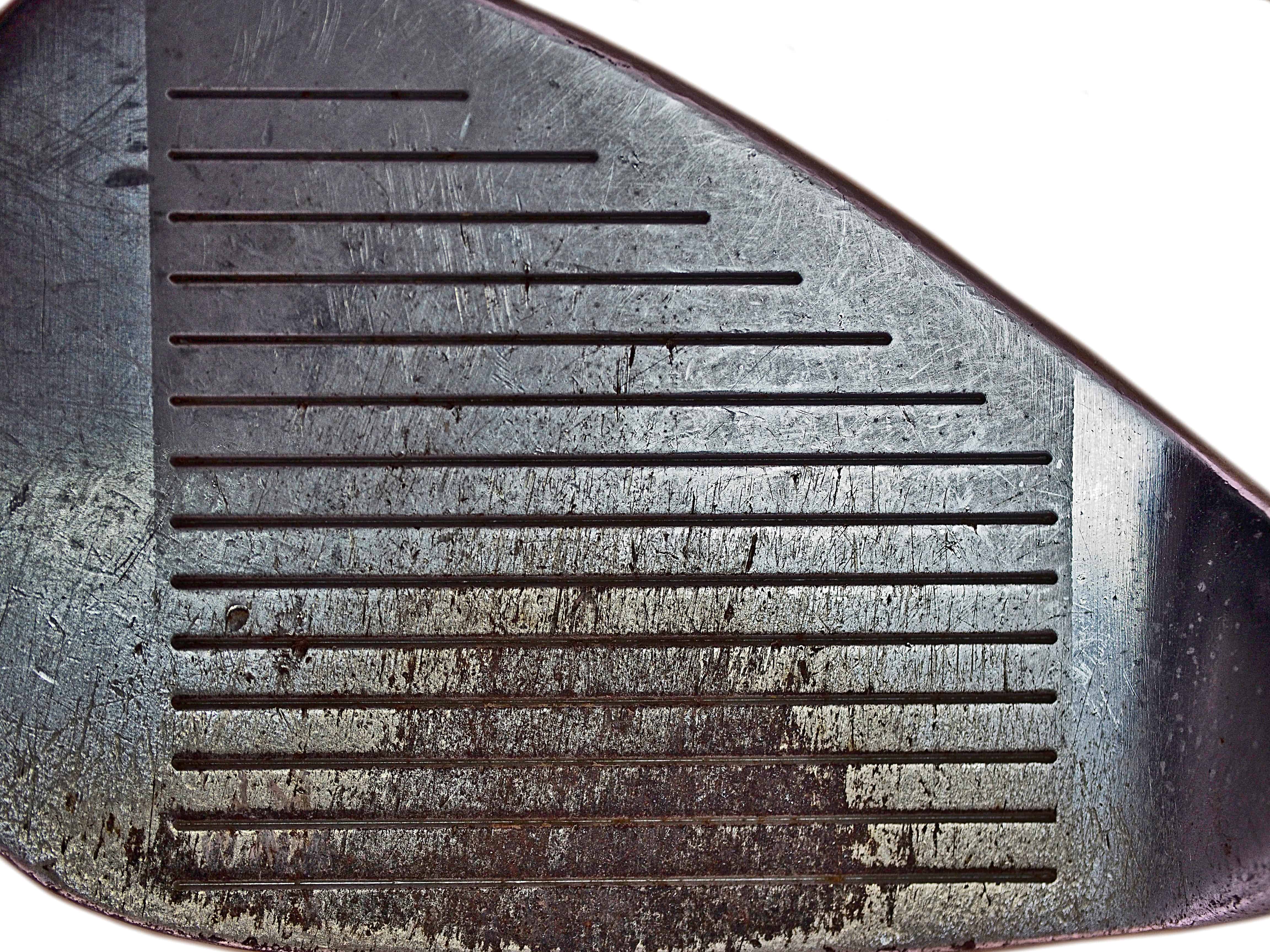Are you new to the game or looking to improve your scores and often wonder how to best utilize your golf wedges or even what are golf wedges? Well, do not worry, we are here to help.
We have a complete overview of everything golf wedge related. We will take you through the most frequently asked questions and wrap up the post by recommending what we feel are the best golf wedges on the market. The great thing is that there are many great options for you.
So what are golf wedges? They are the highest lofted golf clubs in your bag. They are utilized from around 130 yards and closer depending on your golf swing speed. They are often considered your scoring clubs and the better you are with your wedges, more than likely the better your score will be.
Are you ready to start shooting lower scores and impressing your playing partners?

What Are Golf Wedges: The Basics
In a typical golf bag you might find anywhere from 3 to 5 wedges depending on the overall setup of the 14 clubs in the bag. Keep in mind that you are allowed to carry 14 clubs in your bag during your round of golf. Here are the 3 most commonly used wedges in the game of golf
Pitching Wedge
This club typically has a loft of around 48 degrees and is used in the 110-135 yard range for the typical male golfer swing speed. It often comes with your set of clubs and should be a fairly easy club to hit in the air. Many people will hit some lower running chip shots around the green with their pitching wedge.
In the past two decades, club manufacturers have started to lower the loft of clubs, so your pitching wedge may be a big strong and come in at around 45-47 degrees. This is important to know because further down we will discuss the gap wedge which was created as a result of too large of a gap between the pitching wedge and the sand wedge.
Sand Wedge
This club typically had a loft of 56 degrees and for a period of time was the highest lofted club that golfer utilized. It can range from 54 to 58 degrees of loft. Even though it is called a sand wedge it can be used anywhere around the course and for many golfers is their 60-105 yard club for those with a typical swing speed.
You will find many golfers chipping with their sand wedge because it is easier to get the ball in the air and have it stop on the greens. It is also typically great out of the sand because there is what they call “bounce” on the club which allows the club to slide through the sand instead of digging. Learning to use the bounce on a sand wedge for all of your chip shots around the greens will make you a better golfer.
Lob Wedge
This club typically has a loft of around 60 degrees. And can be used from 75 yards and in for the typical golfer. Some golfers only chip with their 60 degree lob wedge as it can be quite versatile because of the bounce on the club and the ability to get the ball in their air.
There are golfers that use a variety of clubs to chip and those like Phil Mickelson that rely heavily on their lob wedge for shots. As greens have become firmer and faster, the need to be able to execute the shot that can get up in the air and stop quickly has become essential to lower scoring. The sign of a low handicap golfer is one that can short sides themselves, but make the hero shot with the lob wedge.
While not recommended to short side yourself, it does happen even to the best.
Gap Wedge
The gap wedge came into play as a result of the gap between the 48 degree pitching wedge and the 56 degree sand wedge. If often times left a gap in the yardage of the best players right around 110-125 yards.
You often found golfers with a 52 degree gap wedge to cut that 8 degree difference in half. The typical irons have a 4 degree difference between each club. When golfers went from the pitching wedge to the sand wedge there was too big of a gap.
Many golfers selected to eliminate one of the longer clubs like a 3 iron or 5 wood for more scoring options.
What Wedges Do I Need?
This might be a question that every golfer ask at one time or another. My current setup includes the following:
P Club = 43 degrees (Titleist AP 1 716s)
PW Club = 48 degrees (Titleist AP 1 716s)
SW Club = 54 degrees (Cleveland RTX-3)
LW Club = 60 degrees (Cleveland RTX-3)
I used to hit a 56 degree sand wedge, but with a recent purchase of the Cleveland RTX-3 I tried to close the gap between the Pitching Wedge and the Lob Wedge.
At a minimum I believe every golfer should have a 48 degree a 54 degree and a 60 degree club. For those that want smaller gaps I would recommend a 48 degree, a 52 degree, a 56 degree and a 60 degree club. Keep in mind that around 60% of shots by amateurs occur from within 100 yards. Having the options to play different shots will only help your game.
If you are someone that doesn’t mind hitting 3 quarter shots than you might be able to only use 3 clubs in that 48-60 degree area. If you are someone that likes to make a similar swing on all shots and simply change the club then you might want 4 different options between 48 and 60 degrees.
Should I Buy Wedges with a Higher Bounce
The point of the higher bounce is to help prevent the leading edge from digging into the ground and causing the chunk shot. If you are someone that digs the leading edge or plays frequently in softer conditions then I would recommend a higher bounce on your wedges. I play with a bounce of 14 degrees on my lob wedge and absolutely love the club.
Best Golf Wedge
I love the Cleveland Wedges. From the look to the options to the overall performance it is difficult to beat the Cleveland Wedges. When I last purchased my wedges, I tested out different options on a launch monitor and found the Cleveland Wedges to be the best option for me. I love the black satin look and the ease that my 60 degree club slides through and produces a nice soft feel with plenty of spin.
Check current price on Amazon for Cleveland Wedges, here.
How Often Should I Buy New Wedges
Did you know that Tiger Woods uses new wedges every tournament? Or that Jordan Spieth changes every few tournaments? While this may be excessive for the average amteaur golfer, understand that the amount of spin over time produced by the wedges does decrease.
I would recommend buying new wedges every 3-4 years for the golfer that plays on average 30 rounds a year. I think you can get some pretty good performance, but at some point you may be missing some spin. My SkyTrak measures my spin rate and I saw around a 1000-2000 increase in RPMs on my new 54 and my 60 when compared with my old clubs. The golf ball stopped much faster and I was able to hit more at the pins.

Tips for Hitting Wedges
I would highly recommend knowing your distances that you hit your wedges and measure out the distances with a three different swing feels, a 75% swing, an 85% swing and a 95% swing. Multiple this by the number of wedges that you have, which is probably 3 or 4 and you have 9 to 12 different go to shots that allow you to maximize your scoring opportunities.
It also allows you to make selections based on where the pin is at, what the wind is doing or the lie that you have. This versatility and having at least 3 swing distances with each of your wedges, will help you become a better golfer and shoot lower scores.
I would also recommend learning to hit the ball three different heights with each wedge. Being able to control the trajectory will be key in hitting it close. Keep in mind that the wind and pin positions (front or back) will impact that trajectory best suits each shot on the course. Spend a significant amount of your practice time within 120 yards and you will see your scores lowers.
Best Online Instruction Videos for the Short Game
I would highly recommend this video by Monte Scheinblum and Brendon DeVore on the right hand under move that Monte teaches. It is painful watching the amateur that yips at chips shots and blades a shot 40 yards past the target. Highly consider Monte’s approach and get out and practice. Your game might be changed forever!
Another teacher that I would highly recommend is Shawn Clement. He truly takes you through what it feels like and capitalizes on our ability to visualize shots and use our feels. He recommends the goldilocks approach which is quite interesting and just may help your game.
Here is one more that may help. Mr. Short Game spends time talking about using the bounce. In the past, the common instruction found in the golf magazines was to play the ball back, move your hands forward and hold off your release. This approach is the new approach to chipping that many of the PGA Tour Pros are now using as fairways and approaches become shorter and shorter.
Take Action…
Get better today, I would recommend these 22 practice games. Golf is about having fun and enjoying the journey. These 22 practice games will maximize your time and your fun. We also have a series on breaking through to the next level. Consider checking out the appropriate level for you!
We have provided guides on how to break 100, 90, 80 and 70. Check out more below, if interested.
